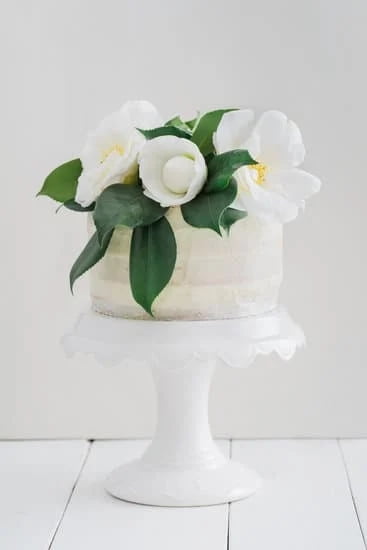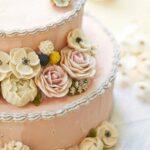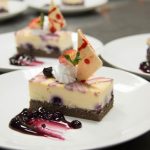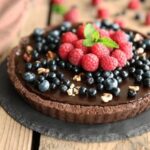Cake decorating is an art form that combines creativity and culinary skills to create visually stunning and delicious cakes. Whether you’re a professional cake decorator or a beginner looking to enhance your baking abilities, knowing the tips and tricks of cake decorating is essential.
In this article, we will explore the various techniques and tools used in cake decorating, as well as provide helpful tips for selecting the right cake, mastering buttercream frosting, working with fondant, piping decorations, generating creative ideas, troubleshooting issues, and showcasing your cake creations. Get ready to take your cake decorating skills to the next level.
When it comes to cake decorating, having the right tools is crucial. From spatulas and pastry bags to piping tips and fondant smoothers, each tool serves a specific purpose in achieving professional-looking designs. We’ll guide you through a comprehensive list of must-have tools for every cake decorator and provide detailed descriptions of how each tool can be utilized to elevate your creations.
The choice of cake itself plays a significant role in successful cake decorating. Different types and flavors of cakes have varying qualities such as stability, texture, and visual appeal – all factors that need to be considered when selecting the ideal canvas for your design.
With our expert advice on choosing the right cake for different purposes, you’ll be able to make informed decisions that result in perfectly balanced combinations of taste and aesthetics. So let’s dive into the artistry behind cake decoration.
Essential Tools for Cake Decorating
Cake decorating requires a range of tools to create beautiful and intricate designs on cakes. Here is a comprehensive list of essential tools that every cake decorator should have in their toolkit:
- Spatulas: Spatulas are versatile tools used for smoothing frosting, spreading batter, and lifting delicate decorations. Offset spatulas are particularly useful for achieving a smooth finish on cakes.
- Piping Bags and Tips: Piping bags are used to pipe frosting onto the cake in various designs. Coupled with different piping tips, such as round tips for outlining and filling, star tips for creating borders and rosettes, and leaf tips for adding realistic foliage, they offer endless possibilities for decoration.
- Turntable: A cake turntable is an invaluable tool that allows decorators to rotate the cake while working on it. This makes it easier to achieve smooth and even frosting application.
- Cake Leveler: A level cake is crucial for successful decorating. A cake leveler helps you trim the top of the cake to create an even surface, ensuring that your layers stack neatly.
- Offset Spatula: An offset spatula is ideal for spreading icing smoothly on the sides of a cake, creating sharp edges and clean finishes.
- Cake Decorating Brushes: These small brushes are handy for applying edible glitter, painting designs with food coloring or edible paint, and dusting powdered sugar or cocoa over stencils.
- Rolling Pin: For fondant decorations, a rolling pin is essential to roll out the fondant into a consistent thickness before covering the cake or cutting shapes.
- Fondant Smoother: As the name suggests, this tool helps to smooth out any wrinkles or air bubbles when covering a cake with fondant.
- Flower Nail: A flower nail is used to create delicate flowers made from royal icing or gum paste by rotating it between your fingers while piping petals onto it.
- 10.Toothpicks: These small, pointed tools are used for a variety of purposes in cake decorating, from creating designs to checking for baked or piping consistency.
Having these essential tools will set you on the right track to create beautifully decorated cakes. With practice and experimentation, you can develop your skills and create impressive designs that will delight both the eyes and taste buds.
Choosing the Right Cake for Decorating
When it comes to cake decorating, choosing the right cake is crucial to achieving beautiful and visually appealing results. The type and flavor of cake you select not only impact the taste but also play a significant role in the stability, texture, and overall visual appeal of your decorated masterpiece. Here are some tips to help you choose the perfect cake for your decorating needs:
- Consider the Purpose: The first step in choosing the right cake for decorating is to consider its purpose. Are you making a tiered wedding cake that needs to support multiple layers? Or are you creating a sculpted or carved design that requires a dense and sturdy cake? Understanding the purpose of your cake will guide you in selecting the appropriate type.
- Stability Matters: Stability is essential when it comes to decorating cakes that need to hold their shape or support additional decorations like fondant or sugar flowers. Opt for cakes with a dense crumb structure such as pound cakes or butter cakes, as they can handle heavy decorations without collapsing.
- Texture and Flavor Harmony: While visual appeal is crucial in cake decorating, it’s essential to ensure that the texture and flavor of the cake complement the decorations. For example, if you’re using light and delicate buttercream piping techniques, a tender sponge cake would be an excellent choice. On the other hand, if you’re covering your cake with fondant, a denser cake like chocolate or carrot could provide better structural support.
- Visual Appeal: The overall look of your decorated cake starts with the base itself. Consider how different types of cakes will visually enhance or detract from your chosen decorations. For elegant designs, a smooth and even-colored sponge cake may be more suitable, while rustic-themed cakes might benefit from textured cakes like chocolate or caramel.
Remember that practice makes perfect when it comes to selecting and working with different types of cakes for decoration purposes. Don’t be afraid to experiment with flavors and textures until you find the perfect combination that enhances your cake decorating skills and delights your taste buds.
| Tips for Choosing the Right Cake for Decorating |
|---|
| 1. Consider the purpose of the cake. |
| 2. Choose a cake with stability to support decorations. |
| 3. Ensure texture and flavor harmony between cake and decorations. |
| 4. Think about visual appeal when selecting a cake. |
Mastering the Basics
Buttercream frosting is a staple in cake decorating and mastering the basics of this technique is essential for any aspiring cake decorator. Whether you’re looking to create a smooth and seamless finish or add intricate designs, here are some step-by-step instructions on how to prepare and apply buttercream frosting smoothly and efficiently.
- Preparation: Before starting the frosting process, make sure that your cake is completely cooled. It’s also essential to have a smooth surface by leveling the top of the cake if needed. To achieve the perfect texture for your buttercream frosting, ensure that your butter is softened at room temperature but not melted.
- Applying the Base Coat: Start by applying a thin layer of buttercream frosting to the entire cake using an offset spatula. This is known as crumb coating and helps seal in crumbs, creating a smooth base for further decoration. Once applied, refrigerate the cake for about 15 minutes or until the frosting sets.
- Final Frosting: After the crumb coat has set, you can now apply the final layer of buttercream frosting to achieve your desired design. Use an offset spatula or piping bag to carefully spread or pipe the frosting onto your cake in even strokes or patterns according to your chosen design.
Tips:
- To achieve an ultra-smooth finish, dip your offset spatula into hot water and wipe it dry before smoothing out the frosting.
- If you prefer piped decorations, use different types of piping tips to create various designs such as rosettes, borders, or writing.
- To add vibrant colors to your buttercream frosting, use gel-based food coloring instead of liquid food coloring as it won’t affect consistency.
Mastering these basic buttercream frosting techniques will provide a solid foundation for expanding your decorating skills and exploring more advanced designs. With practice and experimentation, you’ll be able to create visually stunning cakes that taste just as good as they look.
Next Steps: Learning about the Versatility of Fondant
- An introduction to fondant and its versatility in creating intricate cake decorations.
- Techniques for working with fondant, including rolling, covering a cake, and sculpting decorations.
Fondant is a versatile ingredient that allows the creation of smooth surfaces and intricate designs that are difficult to achieve with buttercream alone. In the next section, we will explore the many ways in which fondant can elevate your cake decorating skills.
Fondant
Fondant, a smooth and pliable icing made from sugar, water, and gelatin, is often called the “secret weapon” in cake decorating. It allows for a wide range of possibilities when it comes to creating intricate and beautiful cake decorations. This section will introduce fondant and provide techniques for working with it, including rolling, covering a cake, and sculpting decorations.
An Introduction to Fondant
Fondant is known for its versatility in cake decorating. It can be shaped into various forms, creating smooth finishes or intricate details on cakes. Fondant provides a sleek and professional appearance to cakes and offers a blank canvas for creativity. Whether you want to create delicate flowers or sculpted figures, fondant is an ideal medium to work with.
- Rolling fondant: To use fondant in cake decorating, it needs to be rolled out into a thin sheet. Start by kneading the fondant until it becomes soft and pliable. Lightly dust your work surface with powdered sugar or cornstarch to prevent sticking. Use a rolling pin to roll out the fondant into an even thickness.
- Covering a cake with fondant: One popular use of fondant is to cover entire cakes for a smooth finish. After rolling out the fondant into a large enough circle or rectangle that can cover your cake completely, carefully lift it using your rolling pin or your hands. Carefully place the rolled-out fondant over the cake and gently smooth it over the top and sides of the cake using your hands or a smoothing tool.
- Sculpting decorations with fondant: Fondants’ malleability makes it perfect for creating edible sculptures such as flowers, figures, and other decorative elements. You can shape the fondant by hand or use molds specifically designed for sculpting with fondants. Practice different techniques such as molding petals individually or combining them together to create realistic flowers.
Troubleshooting Fondant Issues
Working with fondant can be challenging at times, but with a few troubleshooting techniques, you can overcome common issues and achieve flawless results.
- Preventing cracking: Fondant can sometimes crack when rolled or applied to a cake. To prevent this, ensure that the surface of your cake is smooth and free from crumbs before applying the fondant. Knead the fondant well to make it soft and pliable. You can also add a small amount of vegetable shortening or glycerin to help make the fondant more elastic.
- Fixing air bubbles: Air bubbles can occur when covering a cake with fondant, causing unsightly bulges. To fix this issue, gently lift the affected area of fondant and use a small pin or needle to release the trapped air. Smooth down the surrounding area afterward to ensure a seamless finish.
- Coloring fondant: If you want colored fondants for your creations, it’s best to use gel food coloring rather than liquid food coloring. Gel food coloring provides more vibrant colors without affecting the consistency of the fondant.
By mastering the art of working with fondant, you can take your cake decorating skills to new heights and create visually stunning cakes that impress any audience. Whether you’re covering a cake in smooth, elegant layers or sculpting intricate decorations, fondant will be your secret weapon in achieving professional-looking designs.
Piping Techniques for Stunning Cake Decorations
Piping is a versatile and essential skill in cake decorating that involves using a piping bag and various tips to create intricate designs on cakes. Whether you want to create elegant borders, beautiful rosettes or add personalized messages, mastering different piping techniques can take your cake decorations to the next level. Here are some essential piping techniques to help you achieve stunning cake decorations:
- Borders: Borders add a polished finishing touch to cakes and can be created using various piping tips. To pipe a buttercream border, fill a piping bag fitted with a star tip and hold the bag at a 45-degree angle against the cake. Squeeze gently while moving your hand in a continuous motion to create even lines or scallops.
- Rosettes: Rosettes are popular floral decorations that can make any cake look elegant and beautiful. Start by holding the piping bag perpendicular to the cake surface, applying pressure until the frosting forms a small mound. Then, while maintaining constant pressure, move your hand in a circular motion from the outside edge towards the center, creating layers of petals.
- Writing: Adding personalized messages or names to cakes requires precision and control. For writing, use a smaller round tip with just enough frosting in the bag to prevent air bubbles. Hold the bag at a slight angle above the cake surface and apply gentle pressure while writing in cursive or block letters.
- Filigree: Filigree designs consist of delicate lace-like patterns that can give your cakes an intricate look. To achieve this effect, use a small round tip and pipe thin lines or swirls onto parchment paper first to practice accuracy and movement. Once comfortable, carefully transfer the design onto your cake using an offset spatula.
Remember, practice is key when it comes to mastering piping techniques for stunning cake decorations. Start with simple designs and gradually experiment with more complex patterns as you become more confident. Don’t be afraid to make mistakes, as they can be easily fixed with a spatula or by adding extra decorations. With time and patience, you’ll be able to create professional-looking cake decorations that will impress everyone who sees your creations.
Creative Ideas for Cake Decorations
Cake decorating is not just about making a cake look good; it is an opportunity to get creative and showcase your unique style and talent. Whether you are decorating cakes for special occasions or simply want to elevate your baking game, here are some creative ideas for cake decorations that will surely impress.
One creative idea for cake decoration is to incorporate edible flowers. Edible flowers not only add a visually stunning element to the cake but also provide a hint of natural flavors. Consider using fresh flower petals, such as rose petals or violets, to decorate the top of a cake. You can also use whole edible flowers as a centerpiece or scatter them around the edges for an elegant touch.
Another fun idea is to use fruits as decoration. Fresh berries, sliced citrus fruits, or tropical fruits like kiwi and pineapple can add bursts of color and freshness to your cake. Arrange them in a decorative pattern on top of the frosting or create an interesting fruit border around the sides of the cake. This not only adds visual appeal but also gives the cake a delicious twist.
If you want to take your cake decoration skills to another level, consider adding other decorative elements such as edible glitter or metallic accents. Edible glitter comes in various colors and can be sprinkled lightly over the frosting for a whimsical effect. Metallic accents, such as gold or silver leaf, can be carefully applied to create an elegant and luxurious look.
Troubleshooting Cake Decorating Issues
Cake decorating can be a challenging and intricate art form, and even the most experienced decorators can encounter issues along the way. However, with a little knowledge and creativity, these problems can be easily resolved. In this section, we will discuss some common challenges that cake decorators face and provide useful tips to troubleshoot these issues.
One common problem that often occurs during cake decorating is the formation of air bubbles in the frosting. These air bubbles can ruin the smooth surface of your cake and make it look unprofessional. To avoid this issue, it is essential to properly mix your frosting to eliminate any trapped air. You can do this by using a paddle attachment on a stand mixer or stirring slowly by hand until the frosting becomes smooth and glossy.
Another issue that many decorators encounter is uneven frosting on their cakes. This can happen due to improper leveling of the cake layers or insufficient amount of frosting applied between the layers.
To fix this problem, ensure that your cake layers are leveled before stacking them by trimming off any uneven edges. Additionally, make sure to apply an even layer of frosting between each layer by using an offset spatula or a bench scraper to create a smooth and level surface.
Cracked fondant is another challenge that decorators may face when working with this versatile medium. Fondant can crack if it becomes too dry or if there is not enough buttercream underneath for support.
To prevent cracking, knead your fondant until it becomes soft and pliable before rolling it out onto your cake. Additionally, ensure that you have a thin layer of buttercream applied evenly over the entire cake surface before covering it with fondant to provide extra support and prevent cracks.
By understanding these troubleshooting tips and techniques, you will be better equipped to handle any issues that may arise during cake decorating. Remember, practice makes perfect, so don’t get discouraged if you encounter difficulties along the way. With patience and perseverance, you will be able to overcome these challenges and create stunning cake decorations that will impress everyone.
Showcasing Your Cake Decorations
Cake decorating is not only about creating beautiful and delicious cakes, but also about showcasing your creations in the best possible way. The way you present your cake decorations can greatly enhance their visual appeal and make them even more enticing to admire and eat. In this section, we will explore some insightful advice on how to effectively showcase your cake decorations and capture their intricate details, colors, and textures.
Photographing Your Cake Creations
When it comes to showcasing your cake decorations, high-quality photographs are essential. These photos can be used for social media posts, portfolio displays, or even entering cake decorating competitions. Here are some tips for photographing your cakes:
- Lighting: Good lighting is crucial for capturing the true colors and details of your cake. Natural light works best, so if possible, set up your photo shoot near a window or outdoors. Avoid using flash as it can create harsh shadows and wash out colors.
- Background: Choose a clean and simple background that won’t distract from the main focus – the cake. A plain white or pastel-colored backdrop often works well to highlight the cake’s design.
- Angles: Experiment with different angles to find the most flattering view of your cake decoration. Try shooting from various perspectives such as straight on, from above, or at a slight angle. Don’t be afraid to get close-ups of specific details or textures.
Presentation Tips
In addition to taking appealing photographs, how you physically present your cake can also greatly impact its overall presentation. Consider these tips when preparing to display your cake:
- Cake Stand: Invest in a good quality cake stand that compliments the design of your creation. Choose a stand with a color and style that enhances the overall aesthetic rather than distracts from it.
- Decorative Elements: Add extra flair by incorporating decorative elements around the base of the cake stand or around the cake itself. Fresh flowers, edible glitter, or colored ribbon can add a touch of elegance.
- Serving Cut: When it’s time to cut and serve the cake, make sure you have a plan in place for creating neat slices that showcase the interior of the cake design. A sharp knife and clean cutting technique will ensure each slice looks as good as it tastes.
By following these tips for photographing your cake creations and presenting them effectively, you can truly elevate their visual impact. Remember to experiment with different angles, lighting, and presentation styles to find what works best for showcasing your unique cake decorations. With practice and attention to detail, your cakes will become not just delectable treats but also stunning works of art.
Conclusion
In conclusion, mastering cake decorating skills is an art form that not only results in visually appealing and delicious cakes but also allows for personal expression and creativity. Throughout this article, we have covered various techniques and tools essential for cake decorating, from buttercream frosting to fondant and piping.
We have also provided ideas for creative decorations, troubleshooting tips, and advice on showcasing your cake creations. By practicing and experimenting with different techniques, you can elevate your cake decorating skills to new heights.
It is important to remember that cake decorating is not just about following a set of instructions, but rather a journey of exploring and pushing your boundaries. The key to becoming a proficient cake decorator lies in patience, practice, and the willingness to learn from both successes and failures. Take the time to perfect your buttercream frosting techniques or challenge yourself with intricate fondant designs. Embrace creative ideas and incorporate unique elements that reflect your personal style.
Don’t be afraid to think outside the box when it comes to cake decorations. Experiment with different color combinations, textures, and patterns. Consider incorporating edible flowers or fruits to add freshness and vibrancy to your cakes. And most importantly, have fun. Cake decorating should be an enjoyable process that allows you to express yourself while delighting others with your creations.
So go ahead, gather your essential tools, select the right cake base, explore various techniques and let your imagination run wild. Elevate your cake decorating skills by honing in on the basics but don’t be afraid to try something new. With practice and dedication, you will find yourself creating stunning cakes that are not only visually appealing but also a joy to indulge in.
Frequently Asked Questions
What are the different tips for a successful cake decoration?
There are several tips for a successful cake decoration. Firstly, it’s crucial to have a well-leveled and cooled cake before beginning the decorating process. This ensures a smooth surface for the decoration. Secondly, planning the design and gathering all the necessary tools and supplies in advance is essential.
It’s also important to choose the right frosting consistency – too stiff can make piping difficult, while too soft may cause the decorations to lose their shape. When applying frosting or icing, it’s recommended to start with a crumb coat, which helps seal in any loose crumbs and provides a smooth base for further decoration. Finally, adding embellishments like sprinkles or edible decorations can enhance the visual appeal of the cake.
What is the easiest way to decorate a cake?
The easiest way to decorate a cake largely depends on personal preference and skill level. However, one relatively straightforward method that many find easy is using pre-made fondant or ready-to-use icing tubes. Fondant can be rolled out and draped over the cake for a smooth finish or molded into various shapes for more intricate designs.
Ready-to-use icing tubes allow for easy application of detailed patterns or lettering directly onto the cake surface without requiring advanced piping skills. These methods offer convenience and can produce stunning results with minimal effort.
How do you know which piping tip to use?
Choosing the right piping tip is key to achieving desired results when decorating cakes. The choice typically depends on the desired design or texture as well as personal preference. Larger round tips are great for outlining shapes or creating borders, while smaller round tips work well for writing or adding finer details. Open star tips create textured swirls and rosette patterns, while closed star tips produce defined ridges and shells.
Leaf tips mimic natural foliage elements, such as leaves or petals, and grass tips create textured effects resembling grass or hair strands. Basketweave tips provide an intricate woven appearance often used in basket-themed designs. Ultimately, experimenting with different piping tips will help determine which ones best suit specific decorating needs.

Welcome to our cake decorating blog! My name is Destiny Flores, and I am the proud owner of a cake decorating business named Cake Karma. Our mission is to provide delicious, beautiful cakes for all occasions. We specialize in creating custom cakes that are tailored specifically to each customer’s individual needs and tastes.





